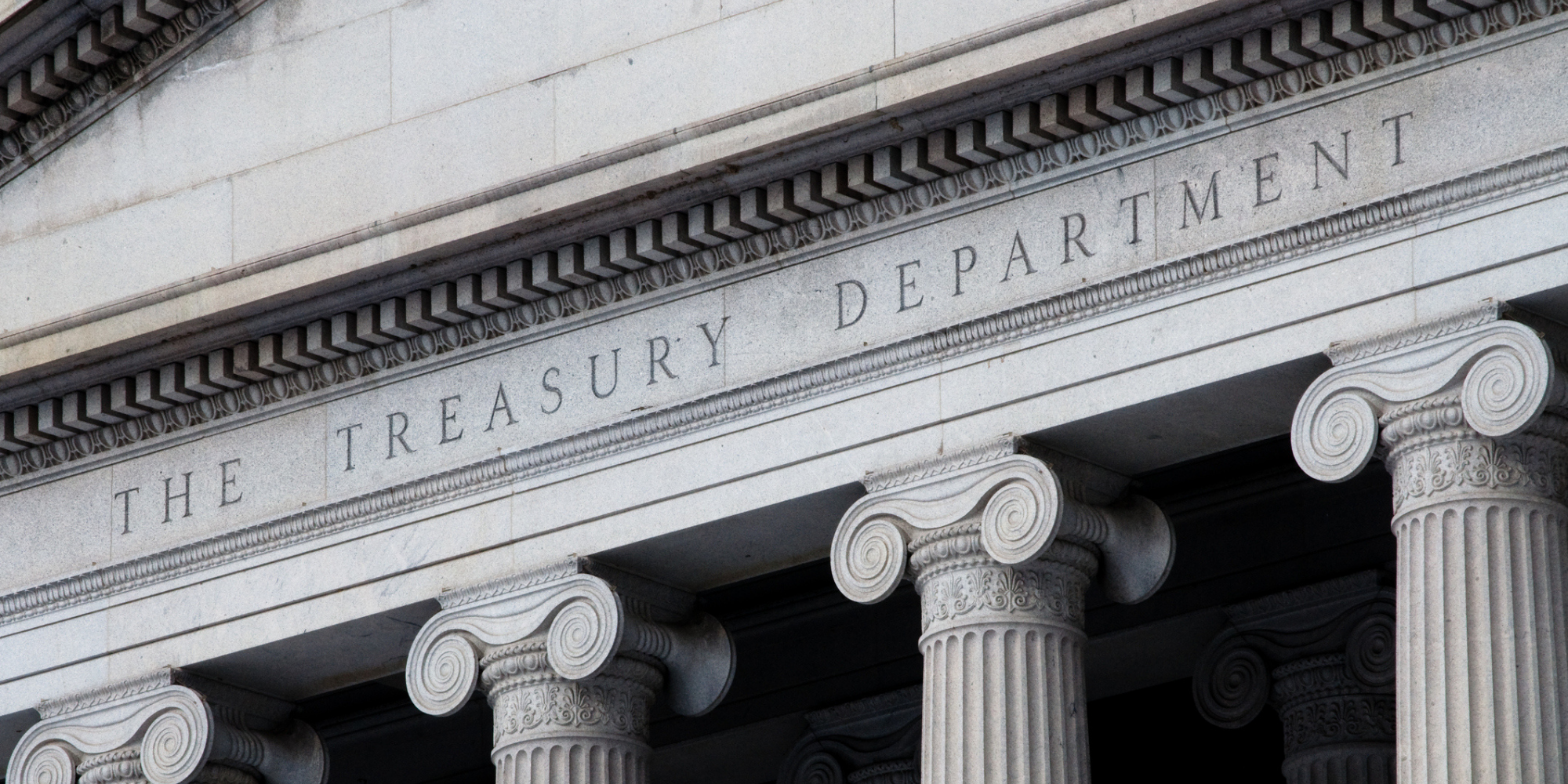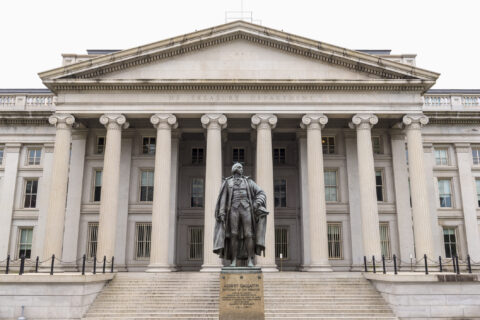On Monday, the Treasury released the guidance on how metropolitan cities1 (entitlement cities) can use the Coronavirus State and Local Fiscal Recovery Funds. The purpose of the Fiscal Recovery Funds is to “provide a substantial infusion of resources to help local governments turn the tide on the pandemic, address its economic fallout, and lay the foundation for a strong and equitable recovery.”
The American Recovery Plan Act (ARPA) authorized the U.S. Department of Treasury to provide Coronavirus State and Local Fiscal Recovery Funds to every municipality in America. The legislation requires the Treasury to allocate $45.6 billion directly to entitled cities. States are required to pass through an additional $19.5 billion to non-entitlement units (NEU) of local government2 with populations less than 50,000 on a per capita basis.
Allocation Information
Treasury has published detailed allocation information for the Coronavirus State and Local Fiscal Recovery Funds:
- Allocation for Metropolitan Cities
- Methodology (PDF)
- Allocation Amount (PDF) /(CSV)
- Local governments will receive funds in two tranches, with 50% provided beginning in May 2021 and the balance delivered approximately 12 months later.
- Allocation for Non-Entitlement Units3
- Methodology (PDF)
- Aggregate State Totals (PDF) / (CSV)
- Conditions on State pass through to non-entitlement units of government
- States and territories may not place additional conditions or requirements on distributions beyond those required by the ARPA and Treasury’s implementing regulations and guidance.
- States and territories are not permitted to offset any debt owed by the NEU’s distribution.
- States and territories may not provide funding on a reimbursement basis—e.g., requiring NEUs to pay for project costs upfront before being reimbursed with Fiscal Recovery Funds payments—because this funding model would not comport with the statutory requirement that States and territories make distributions to NEUs within the statutory timeframe.
Application for Fiscal Relief Funding Entitled Cities
Entitled cities must use the Submission Portal to initiate the process of receiving funding directly from the Treasury. Entitled cities must submit a request to receive funding even if they have previously applied for other programs through the Treasury Submission Portal.
Entitled cities will be asked to provide the following information to complete their submission:
- Jurisdiction name, taxpayer ID number, DUNS Number, and address
- Authorized representative name, title, and email
- Contact person name, title, phone, and email
- Funds transfer information, including recipient’s financial institution, address, phone, and routing number, and account number
- Completed certification document (to be signed by the authorized representative)
All recipients must also have an active registration with the System for Award Management (SAM) database at SAM.gov. An entity that does not have an active SAM registration should visit SAM.gov to begin the entity registration or renewal process. Please note that completing a new SAM registration can take up to three weeks.
Guidance Summary
On Monday, May 10, 2021, the guidance issued by the Treasury seeks to provide substantial flexibility for local governments to meet local needs—including support for households, small businesses, impacted industries, essential workers, and the communities hardest hit by the crisis. These funds can also be used to make necessary investments in water, sewer, and broadband infrastructure.
Funding from the Coronavirus State and Local Fiscal Recovery Funds is subject to the requirements specified in the Interim Final Rule.
Recipients may use these funds to:
- Support public health expenditures by, for example, funding COVID-19 mitigation efforts, medical expenses, behavioral healthcare, and certain public health and safety staff.
- Address negative economic impacts caused by the public health emergency, including economic harms to workers, households, small businesses, impacted industries, and the public sector. This includes:
- Assisting unemployed workers, including services like job training to accelerate rehiring of unemployed workers, may extend to workers unemployed due to the pandemic or the resulting recession, or who were already unemployed when the pandemic began and remained so due to the negative economic impacts of the pandemic.
- Assisting households or populations facing negative economic impacts due to COVID-19 such as food assistance; rent, mortgage, or utility assistance; counseling and legal aid to prevent eviction or homelessness; cash assistance; emergency assistance for burials, home repairs, weatherization, or other needs; internet access or digital literacy assistance; or job training to address negative economic or public health impacts experienced due to a worker’s occupation or level of training.
- Help improve the efficacy of programs addressing negative economic impacts, including data analysis, targeted consumer outreach, improvements to data or technology infrastructure, and impact evaluations.
- Assist small businesses to adopt safer operating procedures, weather periods of closure, or mitigate financial hardship resulting from the COVID-19public health emergency.
- Provide funding for payroll, covered benefits, and other costs associated with rehiring public sector staff up to the pre-pandemic staffing level.
- Aid provided to tourism, travel, and hospitality industries should respond to the negative economic impacts of the pandemic on those and similarly impacted industries.
- Replace lost public sector revenue, using this funding to provide government services to the extent of the reduction in revenue4 experienced due to the pandemic.
- Provide premium pay for essential workers, offering additional support to those who have and will bear the greatest health risks because of their service in critical infrastructure sectors.
- Invest in water, sewer, and broadband infrastructure, make necessary investments to improve access to clean drinking water, support vital wastewater and stormwater infrastructure, and expand access to broadband internet.
Within these overall categories, recipients have broad flexibility to decide how best to use this funding to meet the needs of their communities.
Principles on Using Fiscal Recovery Funds
NLC recommends municipalities consider five principles in determining how to use their Fiscal Recovery Funds:
- Use dedicated grants and programs first whenever possible and save the Fiscal Recovery Funds for gaps and priorities not eligible for other federal and state assistance programs. For example, FEMA’s Public Assistance grant program also provides 100 percent reimbursement to local governments for premium pay for essential workers.
- Assess government operations AND community needs by getting input from key staff and stakeholders to help create a comprehensive needs assessment.
- Prioritize funding to ensure fiscal stability and returning your residents to work.
- Maintain records and document success to create long-term information infrastructure for your future leaders.
- Ensure your Congressional Delegation is part of your success by inviting them to participate in re-openings, ribbon-cuttings, other ceremonies.
Additional Information
NLC will continue to educate local leaders on how to access and use the Fiscal Recovery Funds in the coming weeks. We will be providing additional webinars and questions. The first webinar on the release of the Treasury Guidance was held on May 12, 2021. Access the video and presentation here.
You can also get more information about ARPA and all the other grant programs that are authorized by going to our COVID-19 Pandemic Response & Relief webpage.
1 The term metropolitan/entitled city is defined “in section 102(a)(4) of the Housing and Community Development Act of 1974 (42 U.S.C. 5302(a)(4)) and includes cities that relinquish or defer their status as a metropolitan city for purposes of receiving allocations under section 106 of such Act (42 U.S.C. 5306) for fiscal year 2021.”
2 Non-entitlement units will receive Coronavirus State and Local Fiscal Recovery Funds through their state governments. State governments will receive a specific allocation of these funds from Treasury for this purpose and will be responsible for disbursing these funds to non-entitlement units within their state. Award amounts are based on the population of the non-entitlement unit.
3 Funding amounts for non-entitlement units are presently available only in aggregate at the state level. Treasury expects to provide further guidance on distributions to non-entitlement units in the coming days.
4 A recipient’s reduction in revenue is measured relative to the revenue collected in the most recent full fiscal year prior to the emergency.









